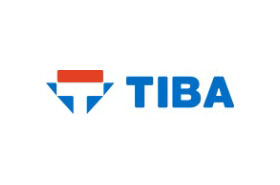In November 2025, the Valencia Containerised Freight Index (VCFI) recorded a monthly decrease of 0.49%, standing at 2,098.40 points. With this adjustment, the index maintains a cumulative growth of 109.84% since the beginning of the series in 2018, although it confirms a general trend of moderation in its recent evolution.
By geographic area, the performance was heterogeneous. The Western Mediterranean recorded a positive monthly variation of 18.53%, reaching 3,058.46 points, which raises its cumulative growth to 205.85%. Meanwhile, the Far East advanced by 6.03% compared to the previous month, standing at 2,214.71 points, with a cumulative increase of 121.47%. Despite these gains in both areas, the overall decline in the general index reflects that other regions included in the VCFI offset these increases, keeping the aggregate result slightly negative.
As a comparative reference with other international freight indices, international maritime freight rates showed a clear downward trend in November, reflecting a market still marked by weak demand and a high level of available capacity. According to Drewry’s World Container Index (WCI), spot rates decreased throughout the month and closed November at around USD 1,806 per 40-foot container, below the levels reached weeks earlier, thus consolidating a generalized decline across several key East–West routes. This correction is due both to the global trade slowdown towards the end of the year and to carrier strategies aimed at adjusting capacity; however, these efforts have not been sufficient to sustain previous freight rate levels, increasing downward pressure on maritime transport prices.
From the demand side, November was marked by a moderation in cargo volumes, a factor that contributed to the downward trend in freight rates. In this context, it is worth recalling that the demand for container maritime transport is largely a derivative of the evolution of international trade, especially the exchange of manufactured goods. As global trade shows mixed signals, container flows tend to evolve in parallel. In this regard, leading indicators such as the RWI/ISL Container Throughput Index provide useful insights into the pulse of global trade. According to its latest available estimate, the global index slightly rebounded in October to 137.2 points, partially offsetting the previous month’s decline. However, regional performance continues to be uneven.
In particular, the North Range Index — which reflects activity at the main ports of northern Europe and serves as a reference for the eurozone’s economic performance — recorded a significant decline, falling from 113.9 to 108.9 points. This drop extends the trend of weakening European traffic, associated with subdued domestic demand, moderate industrial activity levels, and reduced export competitiveness on the continent.
Likewise, Chinese ports — which represent a fundamental component of global container movement — showed a slight downward adjustment in October (from 153.0 to 151.8 points), suggesting that despite a certain stability in supply chains, Asian export activity did not experience significant expansion during that period. Although definitive data for November is not yet available, these signals point to an international trade environment evolving at a moderate pace, which translates into less dynamic demand for maritime transport.
In parallel, the end of the peak season — characterized by inventory restocking and early purchases linked to the fall commercial season — naturally reduced vessel space bookings in November. This may have been compounded by still-elevated inventory levels in Europe and the United States, in a context of subdued consumption, which likely limited the generation of new orders and kept transport demand at restrained levels.
On the supply side, the market continues to be affected by a structural excess of capacity, resulting from significant new vessel deliveries in recent quarters. Although shipping lines have continued to implement adjustment mechanisms — such as blank sailings, service rescheduling, or the temporary withdrawal of vessels for shipyard work, maintenance, or retrofitting — these measures have not been sufficient to offset the demand moderation observed in November.
In this context, the latest data from Alphaliner confirm that global capacity continues to grow at a notable pace. The global cellular fleet exceeded 33 million TEUs in November and consists of over 6,640 vessels, having added more than 2.3 million TEUs over the past twelve months. This increase highlights the structural nature of the supply pressure, which continues to shape market balance.
On the other hand, the evolution of the inactive fleet shows mixed trends. By mid-November, the volume of commercially inactive vessels had slightly decreased to around 0.8% of the global fleet, equivalent to about 87 vessels and nearly 273,000 TEUs — levels considered low and with limited impact as a capacity adjustment tool. At the same time, the number of vessels “in yard” slightly increased to 166 units, representing around 858,000 TEUs, although these temporary withdrawals do not significantly alter the effective available capacity.
From a logistics perspective, November was characterized by a relatively stable functioning of the international supply chain, with moderate congestion levels and a gradual improvement in maritime service punctuality. Increased operational fluidity at ports and terminals, along with a reduction in bottlenecks at strategic nodes, contributed to creating a more predictable environment for transport operations. This logistics normalization — which contrasts with the disruptions experienced in previous years — also tends to ease upward pressure on freight rates, as there are no significant operational tensions driving rate increases.
Overall, November was marked by a freight environment characterized by moderation, where abundant capacity and subdued demand continued to influence rate trends. Although the VCFI showed varying behaviors across regions, the general tone of the market remained aligned with the downward trend observed in the main international indices. The operational stability of the logistics chain and the absence of significant tensions reinforce a scenario of gradual adjustment, with limited upward pressure on freight rates in the short term.

















